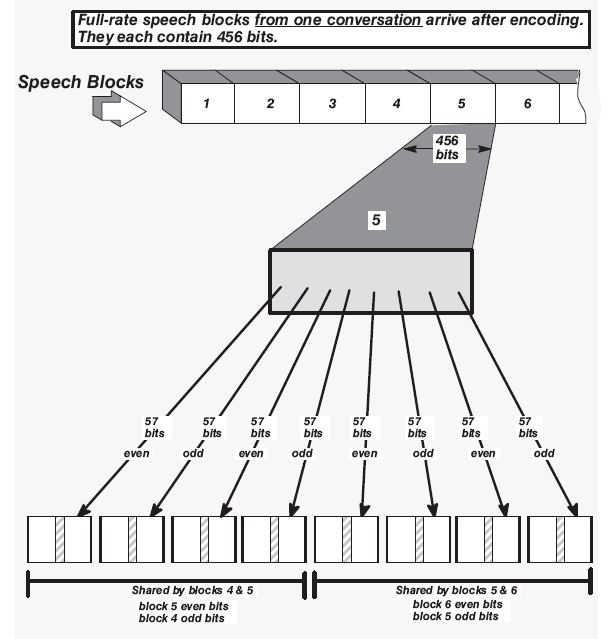Interleaving in gsm used in gsm to reduce error and for speech diagonal types interleaving used here I write how speech in gsm interleaving diagonally.
The diagram below illustrates, in a simplified form, the principle of the interleaving process applied to a full-rate speech channel.
The diagram shows a sequence of ‘speech blocks’ after the encoding process, all from the same subscriber conversation. Each block contains 456 bits, these blocks are then divided into eight blocks each containing 57 bits. Each block will only contain bits from even bit positions or bits from odd bit positions.
The GSM burst will now be produced using these blocks of speech bits. The first four blocks will be placed in the even bit positions of the first four bursts. The last four blocks will be placed in the odd bit positions of the next four bursts. As each burst contains 114 traffic carrying bits, it is in fact shared by two speech blocks. Each block will share four bursts with the block preceding it, and four with the block that succeeds it, as shown. In the diagram block 5 shares the first four bursts with block 4 and the second four bursts with block 6.
Transmission Speech
Each burst will be transmitted in the designated timeslot of eight consecutive TDMA frames, providing the interleaving depth of eight. The diagram below shows how successive bursts from this particular subscriber conversation are transmitted. The subscriber is allocated timeslot 4 of the TDMA frame, it will share this frame with up to seven other subscribers.
It is important to remember that each timeslot on this carrier may be occupied by a different channel combination: traffic, broadcast, dedicated or combined.
Note that FACCH, because it ‘steals’ speech bursts from a subscriber channel, experiences the same kind of interleaving as the speech data that it replaces (interleaving depth = 8). The FACCH will steal a 456 bit block and be interleaved with the speech. Each burst containing a FACCH block of information will have the appropriate stealing flag set.

